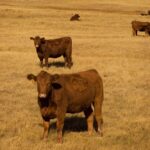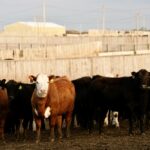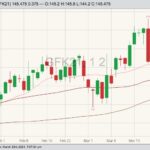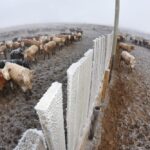Alberta packers were buying fed cattle on a dressed basis in the range of $262-$265 delivered this past week. Using a 60 per cent grading, the live price would be in the range of $157-$159. If a feedlot booked the bulk of its feed grains earlier in winter, feeding margins are now hovering in positive […] Read more
Tag Archives jerry klassen — page 19

Klassen: Cattle producers facing drought-like conditions

Klassen: Feeder cattle divorce from futures’ direction
Compared to last week, western Canadian feeder cattle prices were relatively unchanged. Higher-quality yearlings and calves were steady to $4 higher in Alberta and Saskatchewan; in Manitoba, yearlings traded $2-$4 lower while calves were $3-$5 higher. Domestic cattle markets appeared to divorce from feeder and live cattle futures. June live cattle futures finished the week […] Read more

Klassen: Stronger demand drives feeder market
Compared to last week, western Canadian yearling prices were $3 to as much as $6 higher, but calf prices were relatively unchanged. Major feedlot operators were very aggressive on heavier calves and yearlings weighing 700-850 lbs. Yearlings over 850 lbs. were also well bid but not as strong as their lighter-weight counterparts. Feed barley prices […] Read more

Klassen: Feeder market digests USDA acreage report
Compared to last week, western Canadian feeder cattle markets were relatively unchanged. Lower flesh yearlings appeared to trade $2-$3 higher in certain pockets of Alberta but replacements carrying excessive butter experienced severe discounts of $6 to as much as $10 in some cases. October and December live cattle futures made fresh contract highs, which underpinned […] Read more

Klassen: Feeder cattle market exhibits defensive tone
March 30 — Compared to the previous week, western Canadian feeder cattle markets traded steady to $3 lower on average. Alberta packers were buying fed cattle on a dressed basis in the range of $245-$249 delivered, down from the average value of $250 seven days earlier. Deteriorating feeding margins set a negative tone for the […] Read more

Klassen: Feeder market remains volatile
Feed grain values remain firm
Last week, western Canadian yearling markets were traded $2-$4 above week-ago levels from Monday through Wednesday; however, buyers backed away from the market on Thursday and Friday as feeder cattle futures fell nearly $7 from Wednesday’s high. By the end of the week, yearlings were relatively unchanged from week-ago levels. Calf prices were relatively flat […] Read more

Klassen: Deferred live cattle futures pull feeder market higher
Compared to last week, western Canadian yearling markets traded $5 lower to $3 higher while calves under 600 lbs. were $2 to as much as $7 higher. Yearlings were somewhat sluggish in the eastern Prairie regions, as feedlot operators in Alberta focused on local cattle. Fleshier backgrounded cattle are coming on the market at this […] Read more

Klassen: Steady demand supports feeder cattle prices
Compared to last week, western Canadian yearling prices were unchanged while calves were steady to $2 higher on average. Auction barns received larger supplies of backgrounded cattle and there was a fair amount of direct trade of yearlings off farm. Larger supplies of heavier-weight feeders appeared to limit the upside but there was no slippage. […] Read more

Klassen: Feeder cattle demand surges
Cow-calf producers already thinking spring
Compared to last week, western Canadian yearlings sold $3-$5 higher while calves traded $6 to as much as $10 higher. The return of moderate temperatures enhanced buying enthusiasm across the Prairies. Strength in deferred live cattle futures appeared to offset strong feed grain values. Yearling prices were rather soft through January and the first half […] Read more

Klassen: Cold weather slows feeder cattle market activity
Compared to last week, western Canadian feeder cattle prices were relatively unchanged. Extreme temperatures blanketed Western Canada last week. Many auction barns cancelled sales or had limited numbers on offer. Buyers attended sales either in person or via the internet, which was supportive to the overall price structure. Many backgrounders and cow-calf producers delayed sales […] Read more


